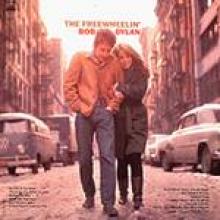Introductory notes
Eyolf Østrem
Ah, but what can I say! This is the album that is responsible for my addiction to Dylan (and not because I bought it when it was released). It is not the one I play most regularly, but whenever I pick it out, I ask myself why I dont do it more often.
Several of the songs are part of the daily routine, of course. Dont Think Twice, Masters of War, Hard Rain, Girl of the North Country, not to mention Blowin in the Wind I do believe I hear at least one of these every day. Half an album of songs, almost 40 years old, by a then folk singer, that still hold their ground in the repertory of a man who has for 35 of those years been a rock artist thats in itself a brand of quality. And the rest of the songs aint so bad either.
What this album first of all shows (and which was confirmed by Good As I Been To You) is what an accomplished guitar player Dylan was and still is, when he wants to. There is some really nice guitar work on some of these tracks: the finger-picking on Don’t Think Twice and Talkin WW3 Blues, the free-rhythmical blues a la Big Joe Williams of Down the Highway, the lyricism of Corrina Corrina, and the persistent, rhythmical hammering-on of Masters of War. None of it is really (really) difficult he gets as much effect as possible from techniques that are actually quite simple (once you master them). This is not to say that hes a cheater (those who have access to Hero Blues, an outtake from the Freewheelin sessions, can hear for themselves that Dylan anno 1963 had a quite good control of his instrument).
A contributing element is the use of altered or open tunings. Three of the songs on Freewheelin are in open D (I shall be Free, Corrina Corrina, and Oxford Town) and three in Dropped D tuning (Masters of War, Down the Highway, and Hard Rain). Several of the outtakes also use such tunings. It is noteworthy that the playing style in these songs differs considerably from the style of the Blood on the Tracks songs, which were also originally played in open D tuning. It is said that it was Joni Mitchell who inspired and/or taught him to use open D tuning, and although he apparently knew it even ten years earlier, he didnt use the same style and technique then.
A striking unifying feature of the playing style of Freewheelin is the many second-inversion chords, i.e. chords with the fifth in the bass, such as D/a (x00232), which is so prominent in Blowin In The Wind. Another (I think related) feature is the many ways he uses to avoid the dominant, such as the turn C Gadd4/b G in Blowin in the Wind and Bob dylans Dream, about which I intend to write a little piece some day.

